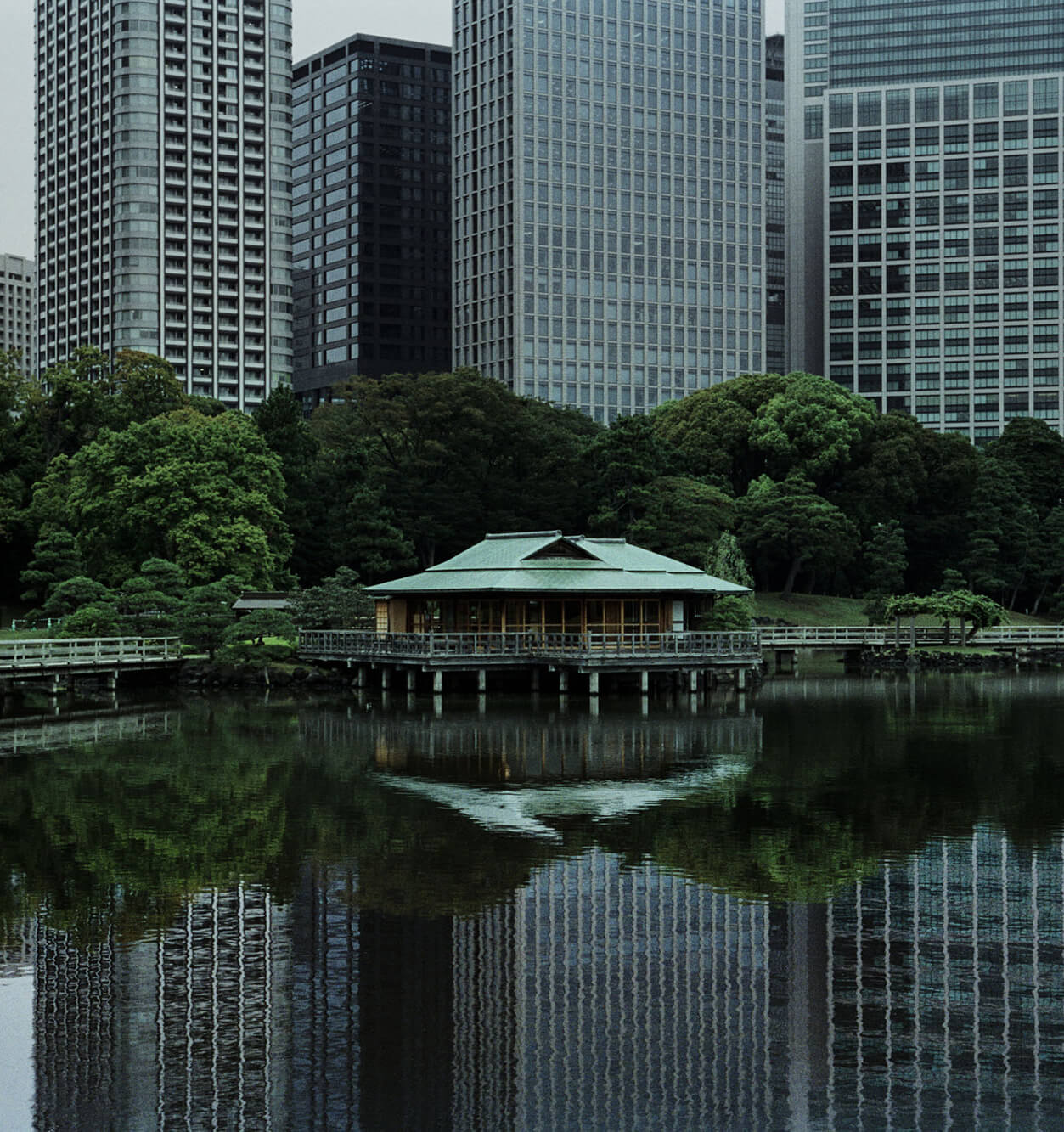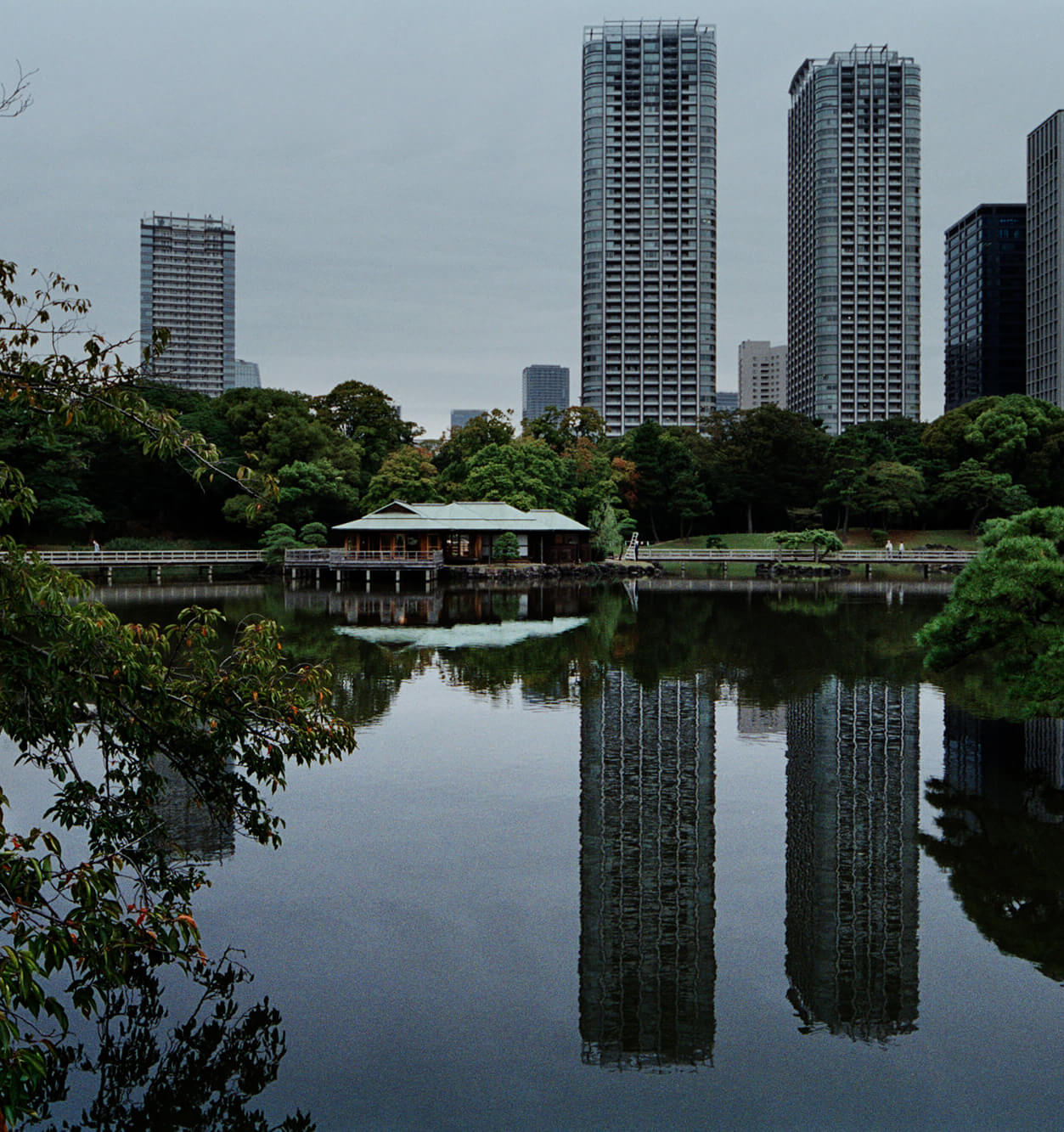DUO’S JOURNEY
Tokyo Hama-rikyu Gardens
Originally a hunting ground for the Shogun family, in 1654, the Kofu domain reclaimed coastal land and built a villa. The garden was later renamed Hama Goten as a villa for the shogunate. After the Meiji Restoration, the palace came under the jurisdiction of the Imperial Household Agency, and the Ministry changed the name to Hama-rikyu. In the garden created on reclaimed land, except for some hills, the overall topography is very flat, and the high-rise buildings of Shiodome stand out like a modern forest in the background. The verticality of the modern forest and the horizontality of the pond, which exaggerates the flatness of the terrain, create a wonderful harmony. Modern architecture has become a shakkei. The garden is designated as a Special Place of Scenic Beauty by the national government.
Yamaguchi: After learning about Korakuen Garden, I was thinking about other gardens and remembered Hama-rikyu. Because of its location in Shiodome, I went in with the expectation that the city's high-rise buildings would make an interesting combination with the pond. When I first went to Hama-rikyu, I thought the pond was at the best location. The horizontal basin has a strong presence, where the small flat Japanese garden floating in the water is tiny compared to the verticality of the buildings in the distance. I thought it was interesting to have the traditional Japanese garden on the horizontal and modern architecture on the vertical as a set. I thought it would be interesting to see the combination of the two. Mr. Kumon took photographs very well with hiding the textual information of the buildings. When I saw the photos, I saw what Mr. Kumon was trying to do. Especially in Japan, buildings have a lot of signs or ads attached to them. But there is no signage anywhere in this photo, and the fact that the top of the building is cut off is crucial. If I were taking a picture, I would have included the entire top of the building, but that would have resulted in a composition that was too explanatory or that would have less impact, like the picture of Korakuen Garden where everything was included. I felt the power of a photographer, where Mr. Kumon cut out the parts of the view that can be experienced and put that in a photograph.
Kumon: I went to Hama-rikyu three or four times, just to see what it would be like on a nice day or in the evening. I wasn’t well-oriented on my first visit, and I think it was the second time I went there that I took this picture. I had heard from Mr. Yamaguchi that he wanted a photograph where you can feel the intersection of the horizontal lines of the water basin and the vertical lines of the buildings. As I visited other gardens, I gradually began to understand what he meant. So I decided that I didn't need the top of the building and cut them out of the frame to create an abstract image of vertical lines. We can focus on things with the human eye, but by looking through the lens and confronting the image through the viewfinder, we can figure out what we don't need.
The time of day and lighting must impact the photos as well.
Kumon: With this project being a journey, we didn’t have much choice on that front. All we could do was take a photograph at whatever time and with whatever weather we had.
Yamaguchi: I am always amazed by how Mr. Kumon can find such beautiful scenes with beautiful lighting, even within a limited timeframe. I suppose photographers have an extraordinary power to grab those moments.
Kumon: That’s why I’ll go 3~4 times, trying all sorts of things. Some photos I’ve taken with some of Mr. Yamaguchi’s keywords in mind, and some are snapshots I took at the moment. This is a photo I snapped at the entrance of Hama-rikyu. I always take this shot each time I visit.
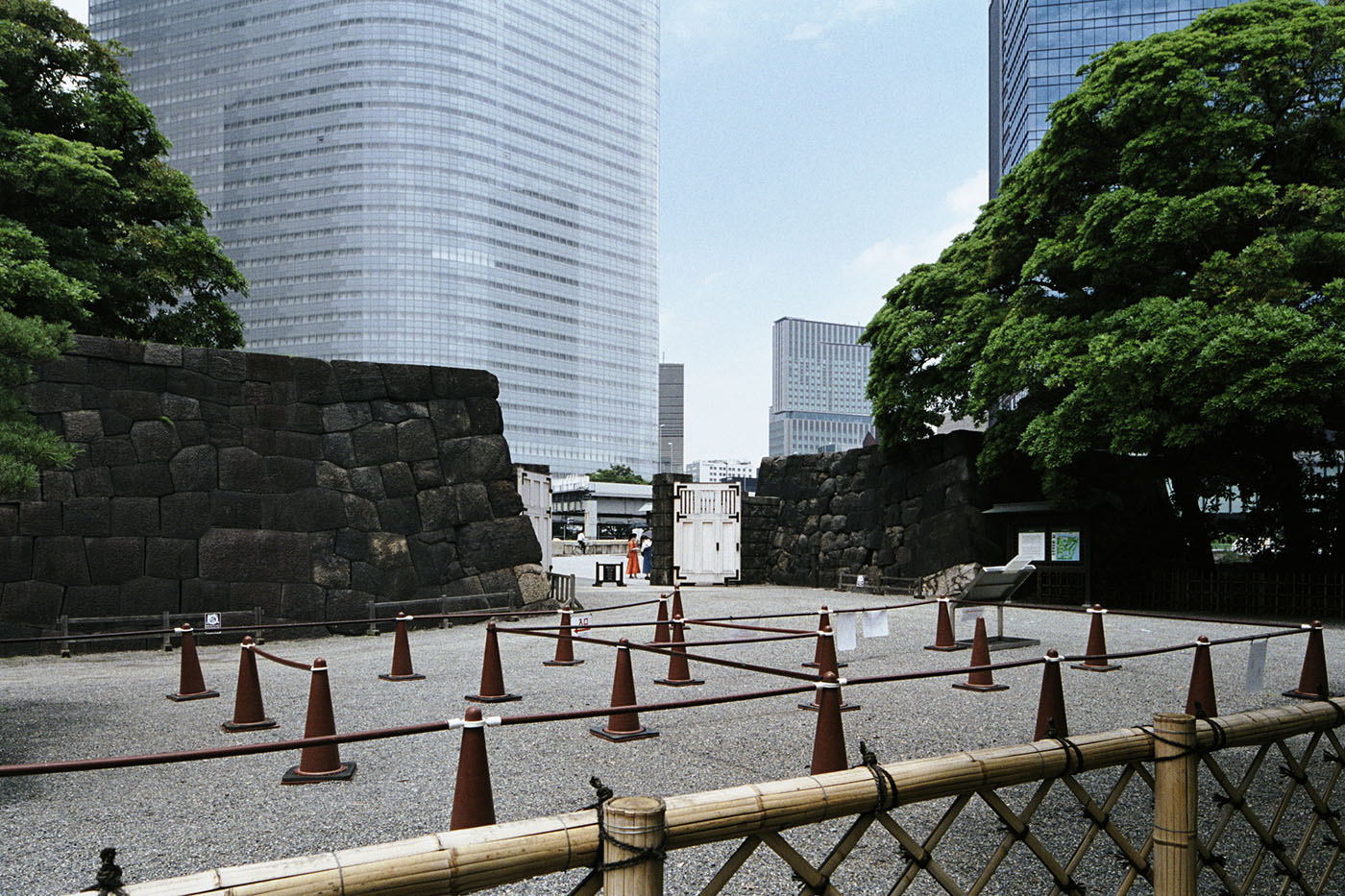
Yamaguchi: I think the entrance of Hama-rikyu Garden with the traffic cones makes for a cool photograph. However, it doesn’t fit into our discussion of "neighboring textures." What we see in the distance is the Dentsu Building, a building designed by a French architect that showcases modern technology, which contrasts with the aging stone wall in the foreground. All of this with the traffic cones is interesting, but it’s not beautiful, so it doesn’t quite fit with our discussion.
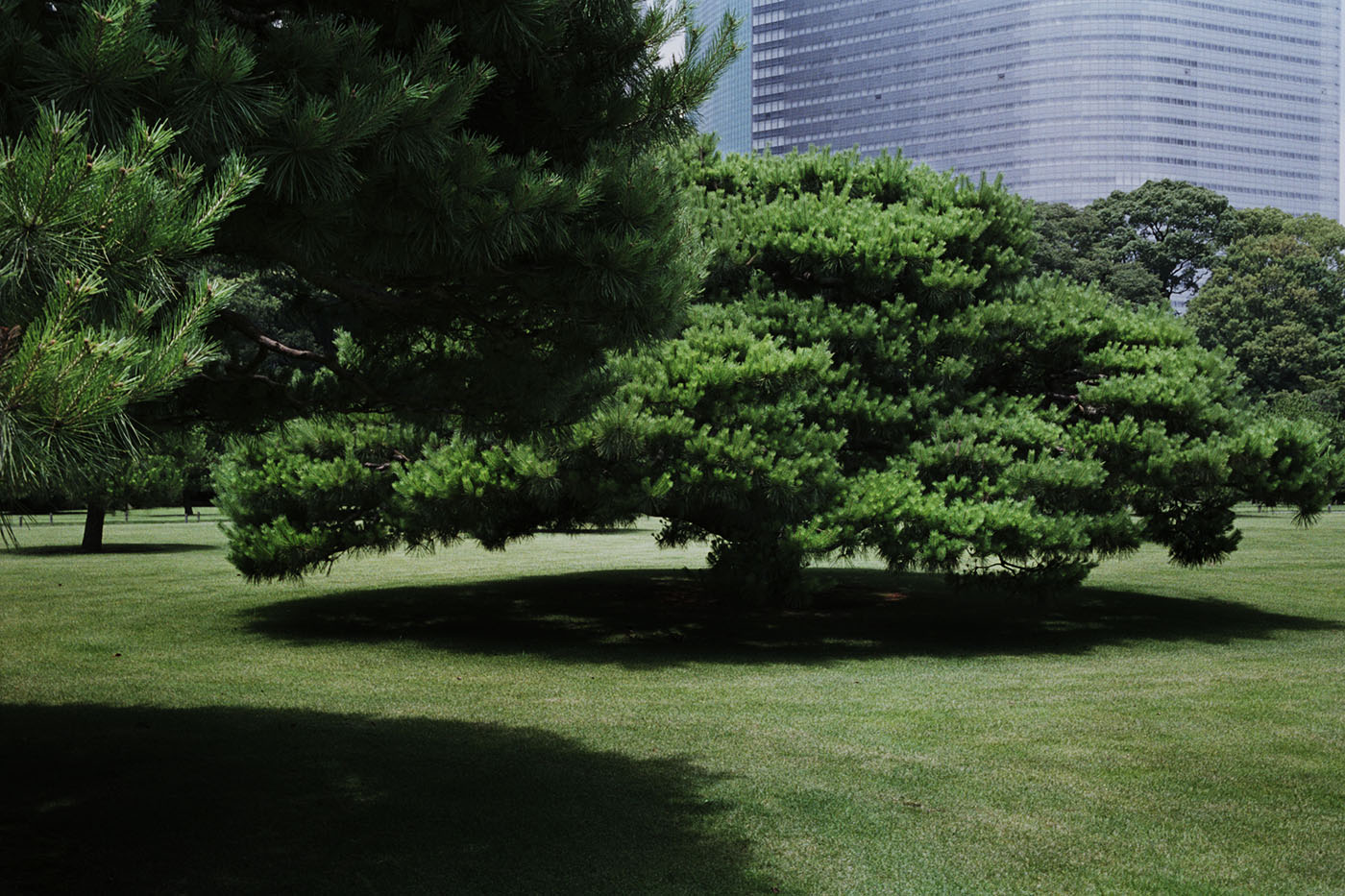
Kumon: I have visited Hama-rikyu many times, and I’ve noticed that the pine trees in Japanese gardens are fascinating. I would love to make a photo book of just pine trees at some point as my project.
Yamaguchi: Hama-rikyu is flat. Since it faces the ocean, it might be reclaimed land. Because it was initially connected to the sea, the lake has some high and low tides. The imposing pine trees on the flat land look similar to buildings in Shimbashi— at the time, I had not yet arrived at the title "neighboring textures," but I started to notice how interesting it was to see new artificial things and natural things standing side by side.
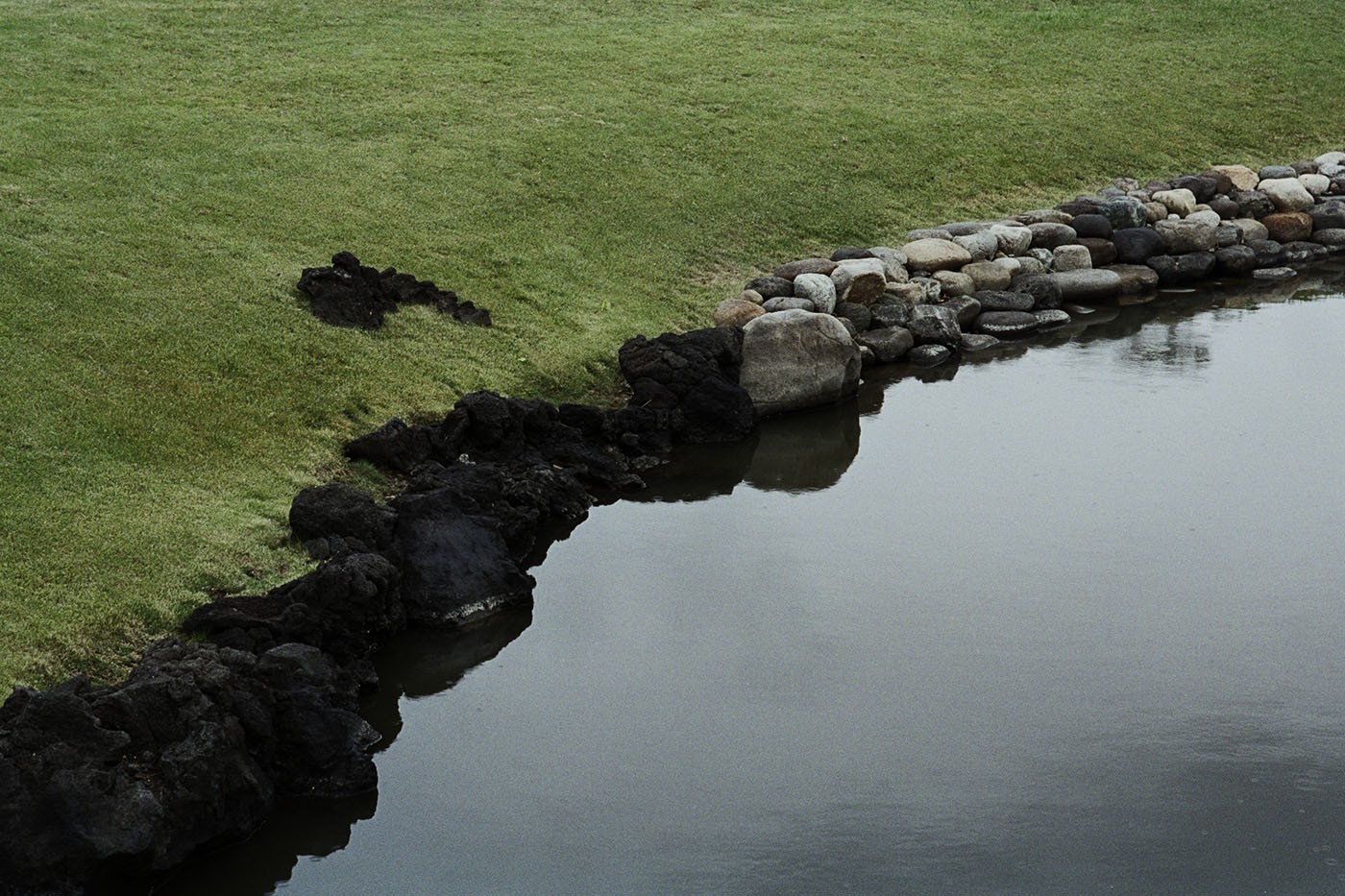
Kumon: In a landscape, you can't help but notice the one thing that is out of place. If you were to remove it, it would not be attractive. In the photo, the water in the pond was completely still. I was also fortunate that there were not many people there, probably due to Covid-19. When I went to Kyoto, there were many people, but Hama-rikyu was empty at the time.
Yamaguchi: Around a pond, you would expect to see the same tones around the edges, but suddenly there is a switch from rough black stones to round white stones. If you look back, you can see that they fit the "neighboring textures", which is scenery that Mr. Kumon found.
October 27, 2021
